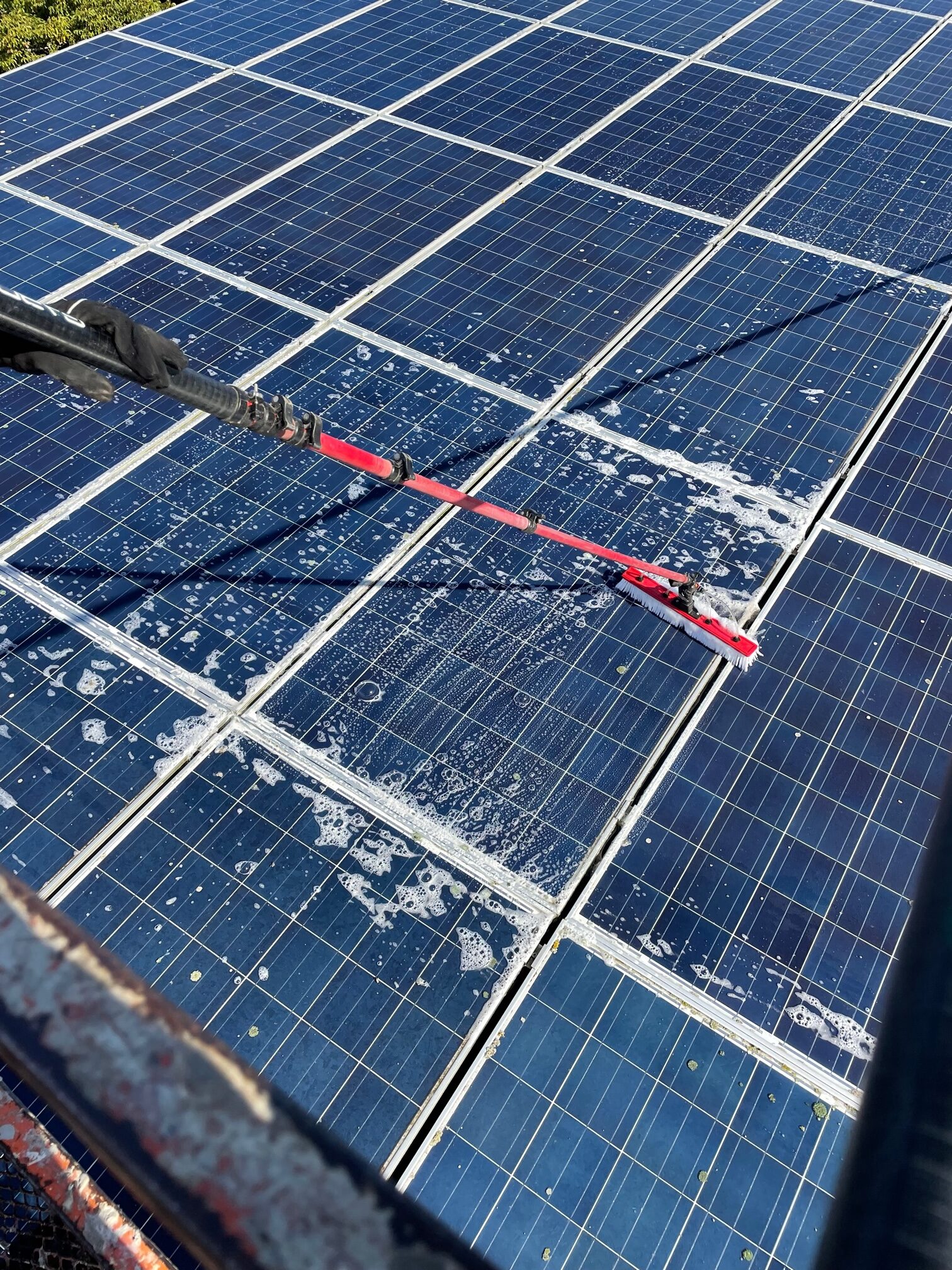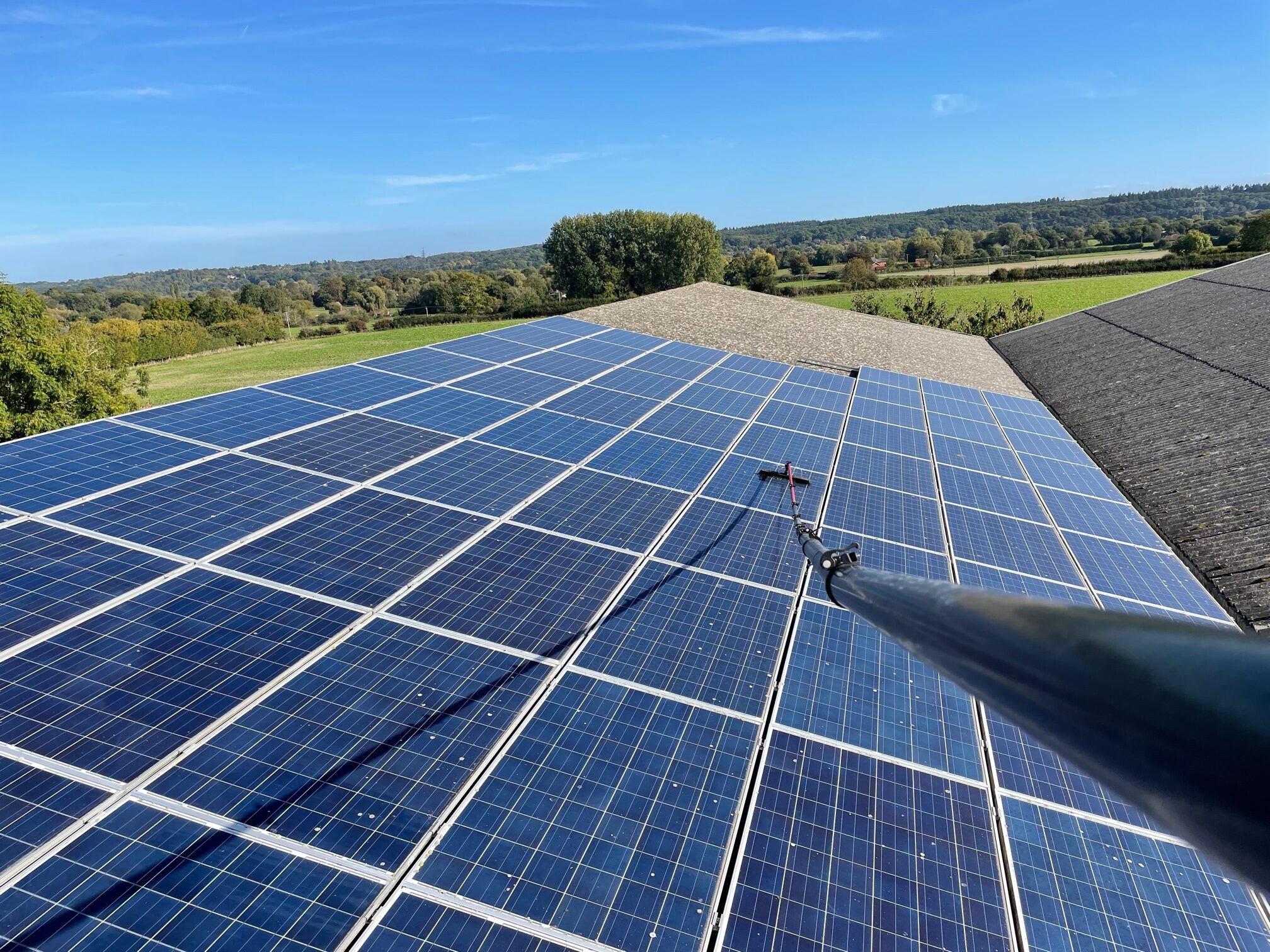Solar panel cleaning research is a subject under much discussion within the UK industry. More and more people are looking for concrete evidence of the benefits that solar panel cleaning can bring. The science of solar panel cleaning is coupled with the science of dust accumulation. Dust accumulation is of course one of the main reasons for needing your solar panels cleaned. We have researched and compiled key findings from recent white paper studies. Below we quote from them directly, but also include links to the full research paper of each quote.
Analysis of Dust Losses in Photovoltaic Modules – World Renewable Energy Congress 2011, Linkoping, Sweden.
Abstract: The accumulation of dust on the surface of a photovoltaic module decreases the radiation reaching the
solar cell and produces losses in the generated power. Dust not only reduces the radiation on the solar cell, but also changes the dependence on the angle of incidence of such radiation. Our results show that the mean of the daily energy loss along a year caused by dust deposited on the surface of the PV module is around 4.4%. In long periods without rain, daily energy losses can be higher than 20%. In addition, the irradiance losses are not constant throughout the day and are strongly dependent on the sunlight incident angle and the ratio between diffuse and direct radiations.
Introduction: Previous studies [2] show that in dry areas, these losses could reach 15%. In these cases the only solution is to clean the modules with water. In large-scale photovoltaic plants this task is often expensive, especially in those areas with water shortage.
Methodology: The objective of this work is to quantify losses caused by the accumulation of dust on the surface of photovoltaic modules. Irradiance values measured by two mSi cells have been recorded every ten minutes during a year. These cells have been previously calibrated against a reference pyranometer Kipp and Zonen CMP21. One of the reference cells has been cleaned daily, while the other has not been cleaned throughout the experiment (one year). Other parameters, such as rainfall and wind speed have been also measured. Once the calibration procedure has been performed both cells remained installed and connected to the acquisition data system and measures of both of them have been recorded every three minutes along one year. By comparing recorded irradiance values sensed by the two reference cells, dust influence on the received radiation can be quantified, and as consequence its effects on the solar energy received in the cell. Daily irradiation losses caused by dust are calculated comparing irradiation values sensed by the clean and the dirty cells.
Results: The mean of the daily energy losses along a year caused by dust is 4.4%. Monthly averages of daily energy losses are lower than 2% except in summer months, when the lack of rain favors the accumulation of dust and causes the increase of losses above 15%. Note that the energy production reaches its maximum in these summer months, and therefore the possible adverse effect of dust is very relevant. Accumulations of dust on the surface of a photovoltaic module reduce strongly the energy received.
Then the panels are scrubbed, removing the lichen and then finally, washed down and rinsed. All work carried out by Clean Solar Solutions is in conjunction with the SEUK Best Practice Guidelines 2021.
Solar Panel Cleaning Fordingbridge
If you are a solar array owner in Fordingbridge or the surrounding area, please contact us. We carry out agricultural, commercial and residential solar panel cleaning and maintenance in the Fordingbridge areas and will be pleased to assist you.


